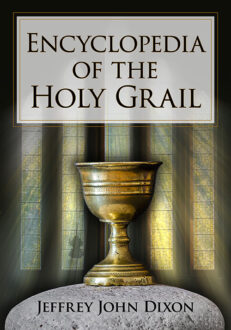Guidelines for Editors of Multicontributor Manuscripts
The editor of a manuscript made up of essays by multiple contributors bears several unique responsibilities. This guide describes what you will need to do and some challenges you may confront. If you have questions not addressed here, please feel free always to check with our editorial staff by letter or email.
Your Basic Responsibilities
- Identifying authors who will write the essays, and securing their commitments.
- Providing whatever editorial guidance the contributors may need, answering their questions, and conducting all necessary communication with them. McFarland needs to be in touch with you only
- Causing the contributors to deliver their essays to you by an agreed-upon date with a signed release (see below). You may have to manage or replace an uncooperative author (keeps promising, continues to delay, but insists he’s in to stay).
- Ensuring that the essays are in proper form before delivering the manuscript. It is the editor’s job to assess and resolve such matters as quality, appropriateness, disharmony, and disproportionate length. You must also determine to your satisfaction that the content and style of each essay are consistent with a description you and the author have agreed on. The essays must follow a uniform format on such matters as notes, bibliography, use of subheadings, and so forth. You should proofread and correct each essay before sending the manuscript to us; this includes ensuring the citation styles match throughout the manuscript. Don’t allow one contributor to use MLA, for instance, while another uses Chicago.
- Delivering to McFarland a manuscript complete in every way, including an electronic copy of the manuscript and printed copies of all contributor releases. We cannot call a manuscript “received” until we have every component of it—and we need it all together in one mailing only.
- Answering any questions we may raise during the publication process.
- Reading proofs and creating an index. And, just as important, letting contributors know they will not be allowed to proofread their essays or to revise them after the manuscript has been delivered.
Editorial Points to Consider
Work with your contributors to ensure that the essays fit comfortably together. Common problems include subject overlap (the reader will tolerate a little, if the book has a narrow topic, but more than a trace hurts); conflicting styles or formats (keep it simple and uniform) and varying documentation systems (each essay must use the same standard style). Also watch for individual essays whose voice is incompatible with the book—too personal, too slangy, etc. And guard against wildly unequal lengths. We also ask that all essays conform to American conventions of style and spelling.
The manuscript needs to come in at an appropriate total length. In early discussions, we will agree on an approximate length (usually in the form of a word count), and it will be your job to keep it in or near that range. Sometimes this means dropping essays.
McFarland reserves the right to reject an essay at any time should it prove unsuitable or its author troublesome or uncooperative. This is rare but the possibility exists.
Essay titles can be a trouble area, especially in books with a narrow focus. Attack repetition: In a book of essays about Mark Twain, for example, you don’t want Twain’s name appearing in all, or even most, titles. Aim for economy: Discourage contributors from indulging in triple-decker titles (main title: subtitle: sub-subtitle), tricky locutions or excessive wordiness. Work out the titles with the contributors before delivering the manuscript, and make sure they know that you and the publisher have the final say.
Contributor Names and Bios
You must regularize names so that each contributor’s name is in exactly the same form everywhere it appears: in the table of contents, at the head of the essay, in the biographies, and (if applicable) in your preface or introduction. Don’t have John Doe in one place, John M. Doe in another and J.M. Doe in a third. You might include a line on the release so a contributor can print exactly how he wants his name to appear.
Most multicontributor books feature a section of biographical information on the authors, describing their background, qualifications, institutional affiliation if any, and other pertinent facts. If you plan to include such a section, be sure to provide an entry from every contributor, and edit each to a brief, fairly uniform length (preferably 50 to 90 words each).
Your contributors should provide factual information only; to ensure consistency it is best if you write or rewrite the bios yourself. Don’t allow the bios to veer into the unprofessional; there’s little need to mention pets or unrelated hobbies, for instance. An easy-going tone is fine, but unrevealing discursiveness that tries to ingratiate is not.
Contributor Releases
As volume editor, one of your responsibilities is to secure a contributor release for every previously unpublished essay in the collection. This release must grant exclusive rights to the essays to you. McFarland will control those rights while the book remains in print. While the book is young and earning most of its sales, it is important that the book is the only place the essays can be found. After 18 months, we will generally approve reprint requests for a modest fee. If a contributor wants to reuse their essay in a book of their own, we will grant reprint rights gratis.
You should retain hard copies and originals of all permissions and releases for your own records and send digital copies of the same to McFarland at the time of delivery. Please label the digital files of those releases using the contributors’ last name. If an essay has two or more coauthors, each must provide a release. If you include a previously published essay, you will need a reprint permission from the author and the previous publisher, unless the publisher has returned the rights to the author. Reprint permissions won’t grant you actual ownership of the essays; what you need is “nonexclusive world rights” or the equivalent, with no restrictions on term, territory or print run. Be sure to include in the manuscript a credit line detailing the original publication of any reprinted essay, including any special wording the permission grantor requires.
Other Permission Issues
In examining the essays before manuscript delivery, look for elements that may present copyright issues. Sometimes two or more essays quote from the same original works, and thus the book in aggregate uses more than fair use permits. Beware of poetry or song lyrics, both of which are categorically very rights-sensitive while under copyright. (Works first published after 1923 may still be under copyright.) Contributors may include photographs or other illustrations that require permission from rights owners. It is your job to identify and, via the contributors, satisfy all permission needs before delivering the manuscript, whether by supplying permissions or by deleting the material in question.
Delivering the Manuscript
Deliver the manuscript complete in every way in one mailing only. That means a final double-spaced copy with continuous page numbers (with title page, table of contents, your preface or introduction, all the essays, all notes and bibliographies) on disk or flash drive, scans of all contributor releases and any other necessary permissions, and any photographs or other illustrations (not embedded in the manuscript). The delivered manuscript represents a work fully edited and approved by you.
Please use Times New Roman, 11 or 12 points, throughout the manuscript. If the manuscript was not originally created using this font and if it utilizes any foreign characters or diacritical marks, please carefully review the manuscript to ensure these characters appear correctly.
Royalties and Free Books
As editor you will receive all royalties. (If there are two or more editors, the contract will specify whatever division of royalties you settle upon together.) There will be ten free copies of the published book for you (to be divided according to royalty split) and one free copy for each contributor. Discuss this with us early, though, if you will have a high number of contributors; the typical range is roughly 10–25. We send these copies to you to distribute—you will need to decide if you want to receive physical or digital copies of the book for contributors.



